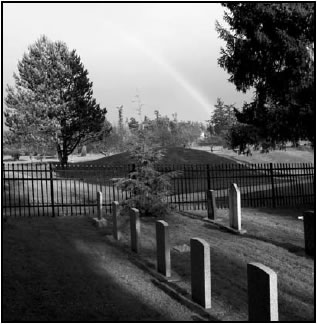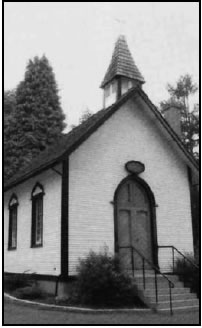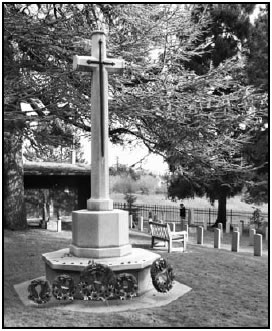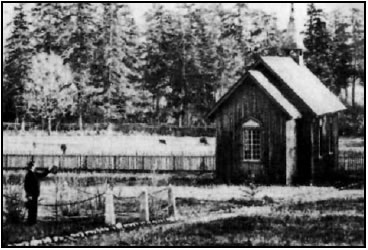Veterans Cemetery in Esquimalt, British Columbia, has been an honoured final resting place for those who served at sea since 1868. Over the years, the cemetery was opened to anyone who served in Canada's military. Today, more than 2,500 military personnel and their family members are buried at God's Acre—as this beautiful place is commonly known.
The visitors who come to this National Historic Site to stroll the shaded lawns and read the time-worn inscriptions on the grave markers gain a special perspective on our country's naval heritage, military history and the importance of remembrance. Understanding what Canadians have achieved and sacrificed in the cause of peace and freedom, both here at home and around the world, is important. This knowledge allows us all to better understand our country's past and how we can build a brighter future together.
The history of Veterans Cemetery in Esquimalt goes back to July 8, 1868, when Rear-Admiral George Fowler Hastings purchased an acre of land from Puget Sound Agricultural Company, a subsidiary of the Hudson's Bay Company. He wanted to create a Royal Navy cemetery for "deceased officers and men." The total cost to buy and prepare the former turnip field, on what was once the Constance Cove farm, was $250. The cemetery soon became known as God's Acre.
Before the establishment of Veterans Cemetery, Royal Navy officers had been buried at the Quadra Street Cemetery (now known as Pioneer Square). Sailors were buried on Brothers Island, at the mouth of Esquimalt Harbour. This arrangement had to change when the threat of a war with Russia loomed in the 1860s and the British decided to construct a gun battery on Brothers Island. While no graves had to be moved at the time, it became doubtful that the island could continue to be used as a cemetery.
The new cemetery for the Royal Navy was divided into three sections: one for Episcopalians, one for Roman Catholics and one for Dissenters (certain Protestant denominations). A small chapel was also constructed and left unconsecrated so it could be used by all sects. The burial ground was consecrated on July 14, 1868, by the Right Reverend George Hills, the first Anglican bishop of British Columbia.
Further tension with Russia in 1889 meant that the gun batteries on Brothers Island were strengthened to better defend against the threat of the Imperial Russian Navy. To allow room for this expansion, the graves of the Royal Navy sailors buried there were moved to the new cemetery.
The Royal Artillery arrived in 1901 to aid in the defence of the Esquimalt naval base. At that time, the British War Office purchased the eastern section of the cemetery for burial of artillery officers and soldiers. Time passed and the Royal Canadian Navy and Canadian Army took over from their British counterparts, but the two sections of the cemetery continued as separate units.
In 1947, the Department of Veterans Affairs took over the 1.1 hectare (2.7 acre) cemetery and the two sections were joined to become the Veterans Cemetery. Nestled between the 12th and 17th holes of the Gorge Vale Golf Club, this unique location remains affectionately known as God's Acre.
The small and charming chapel at Veterans Cemetery is nestled beneath old evergreen trees. While the building was renovated in 1945, its historic character was preserved. The construction of the chapel is unique as it made use of many different kinds of wood from around the British Commonwealth, including camphor, teak, ironwood and mahogany.
Along the walls are plaques commemorating Royal Navy ships and their crew members, many of whom are buried in the oldest areas of the tree-shaded cemetery. Old ship's lanterns, once fueled by whale oil, hang as reminders of the days of "wooden ships and iron men." The white ensign of the Royal Canadian Navy can be seen above the altar. It is a reminder of the many Canadian ships that served under that flag—as well as the many men from those ships who died.
The chapel is temporarily closed to the public.
The Cross of Sacrifice in Veterans Cemetery was unveiled on October 27, 1961, by Maj.-Gen. George R. Pearkes. Pearkes, a Victoria Cross recipient, was a former Minister of National Defence and lieutenant-governor of British Columbia.
While walking through the oldest part of Veterans Cemetery, visitors will see both large, ornate stone grave markers, as well as modest small wooden or iron crosses.



